
Top 10 Disturbing Toddler Behavior Problems
9 min readWritten by Chandrani Mukherjee


With toddlers, you can always expect surprises that can test your patience every moment. Some of their behavior may bring joy and admiration; while others can put you in embarrassment and anger. Additionally, you may also go crazy if you find disturbing toddler behavior problems surfacing all of a sudden in your household.
Some of these behaviors are more or less common in all toddlers; perhaps with mild to moderate variations. However, there are toddlers who may manifest problem behaviors that are dangerous and don’t align with societal norms. Keep reading, just to gather insights on how to discourage these habits and actions in a firm, yet loving manner.
In This Article
- What is Considered as Disturbing or Challenging Behavior in Toddlers?
- What Are The Causes of Disturbing Behavior in Toddlers?
- Top Disturbing Behaviors in Toddlers
- Top 10 Tips to Manage Toddler’s Behavior
- Few Pointers to Remember About Toddler’s Disturbing Behavior
- FAQ’s
What is Considered as Disturbing or Challenging Behavior in Toddlers?

Disturbing behavior in toddlers typically include actions and conduct that are harmful and socially unacceptable. While some challenging behaviors like tantrums or not listening to parents are common and often diminish with age, other toddler behavior problems can be quite upsetting and annoying for the parent to deal with.
Research studies (1) have also found that temper tantrums are common in 21% of toddlers below 3 years; maybe because they have poor emotional regulation and cannot verbalize their needs and wants in words. At times, toddlers may exhibit hitting, biting, and hair-pulling as a regular affair in their daily life just to seek parental attention. Moreover, screaming, banging their head on the floor or objects are harmful and are triggered by anger, frustration, tiredness, and poor need satisfaction.
What Are The Causes of Disturbing Behaviors in Toddlers?

Understanding the underlying thoughts and emotions driving their behavior is crucial for analyzing their challenges. Some of the major causes behind disturbing toddler behavior problems are-
- Illness or physical discomfort can be a cause
- Lack of sleep or tiredness can lead to disturbing behaviors
- Changes in daily routine, or new environment
- Toddlers may try to assert their love for freedom by disobeying parents
- Their limited ability to express their feelings in words can lead to disturbing behaviors such as whining or crying
- Toddlers can also show their anger if they are hungry, sleepy, or not being able to satisfy their physical needs
- At times, acting out anger can also hint attention-seeking behavior from elders at home
- Their lack of ability to handle emotions leads to screaming, temper tantrums, (2a) and head-banging
- Overactive toddlers need constant stimulation to keep busy; otherwise throwing tantrums are common
Top Disturbing Behaviors in Toddlers
Now let’s explore the various types of disturbing and challenging behaviors and how they manifest in a toddler’s daily life.
1. Biting Others or Biting Things
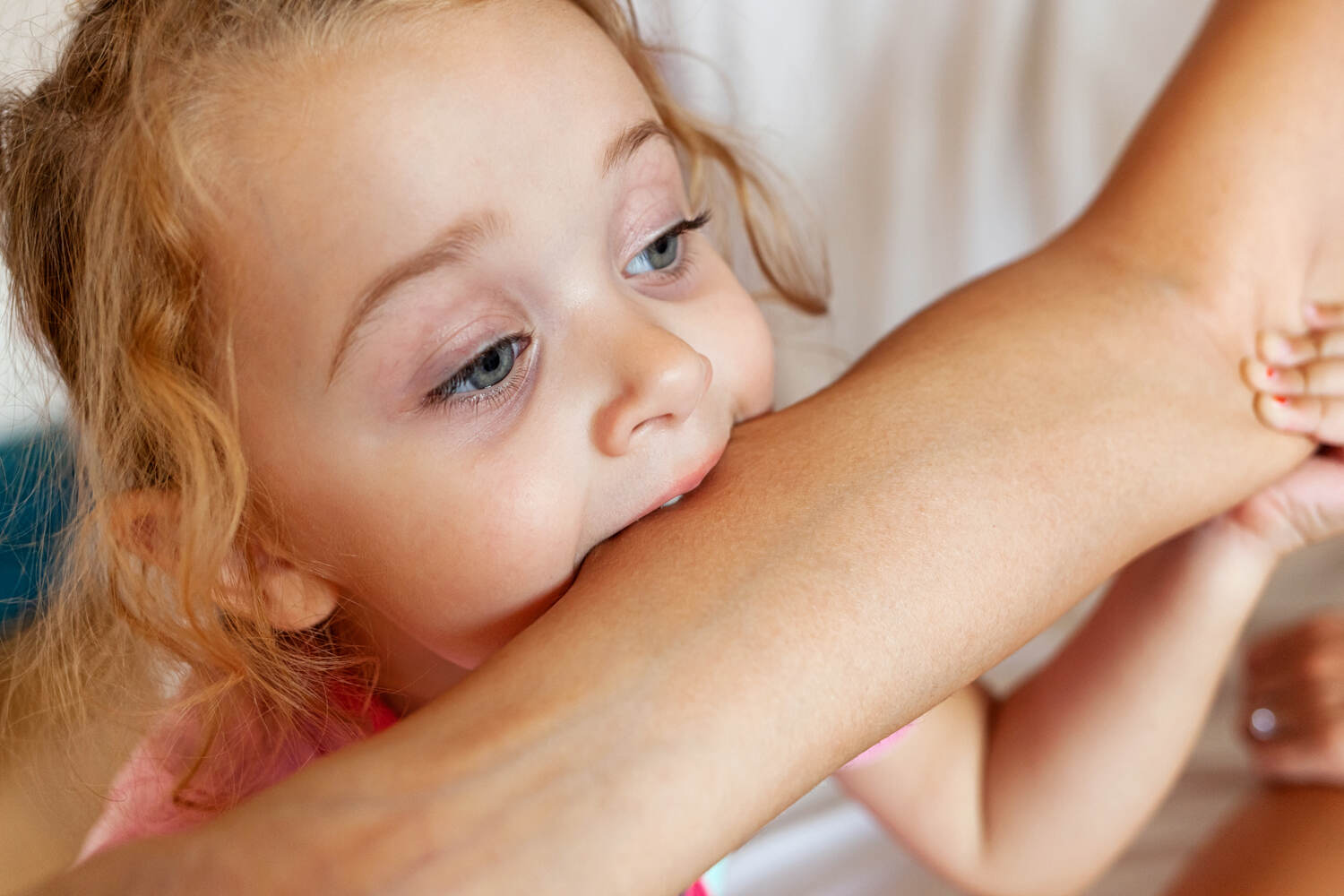
This type of disturbing behavior gets common when your toddler is either hungry or upset about certain things not happening as per their wish. It often starts with frustration and irritation, leading to biting pillows, soft toys, etc. Sometimes, they may also bite their fingers and get hurt badly.
Remedy
- You can gently remove them from the situation and explain them that biting hurts
- Provide them with crunchy and healthy food item such as carrot sticks, or cracker biscuits to bite and vent out their annoyance
- Avoid scolding and yelling. Instead use praise when they do without biting
2. Grinding Teeth in Anger

In toddlers, this behavior reflects stress or physical discomfort of some sort. Therefore, it is vital to know the underlying reason. This action involves rubbing teeth with distressed facial expressions, either showing anger or is irritated with some action of the parent.
Remedy
- You can calm your toddler by gently massaging their back
- Help them vent out their anger on something else such as a ‘hit-me’ toy, or offer a ball to play with, just to divert their attention from the source of annoyance
- Look out for physical discomfort or illness as toddlers are too small to verbally express their needs
3. Using Bad Language
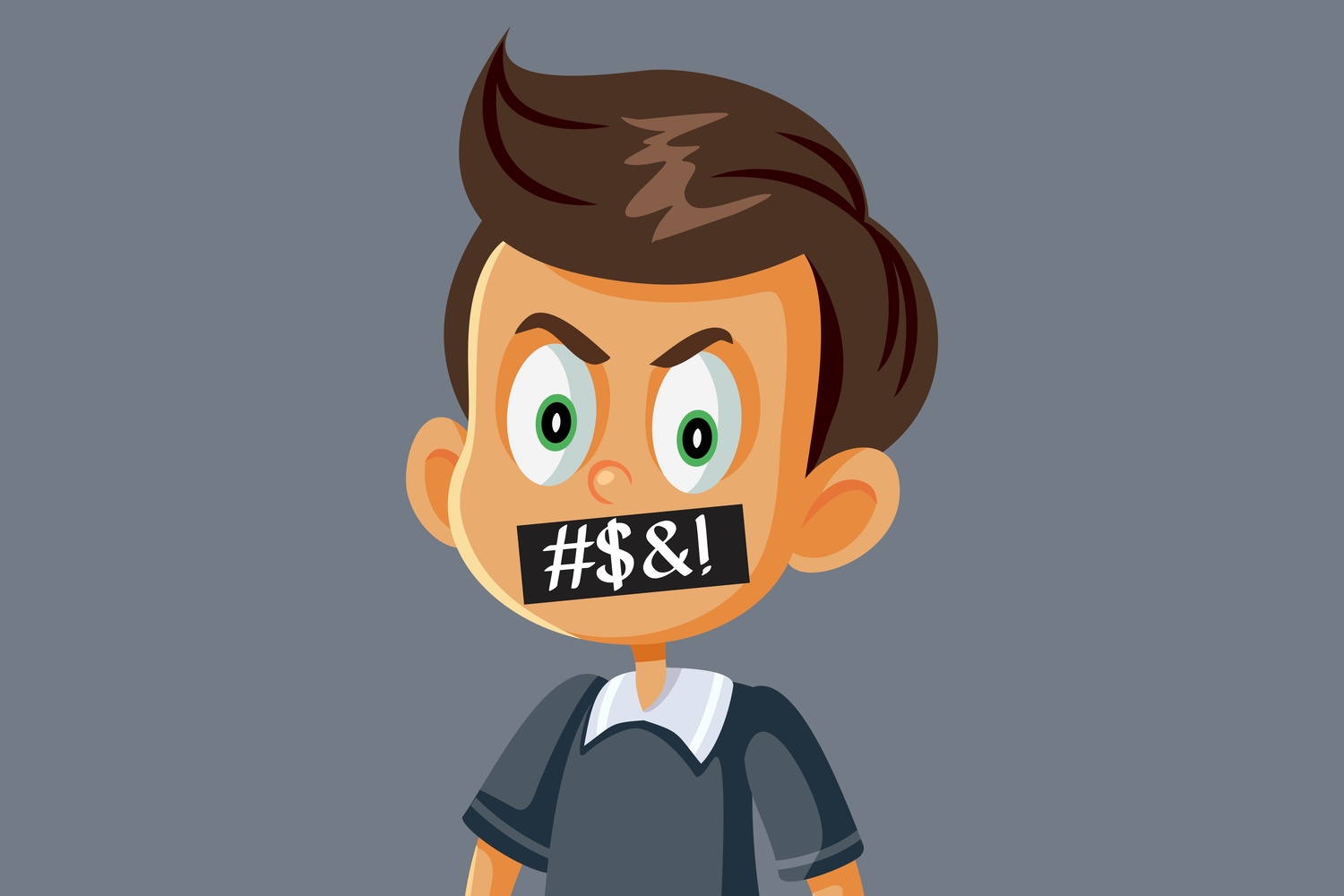
Since tiny tots pick up what others are saying around them, it’s not uncommon for them to learn bad language from elders and older siblings. The toddler observes, imitates, and later on repeats the bad language in most inappropriate situations. Research findings (3) revealed that cartoon programs can impact a toddler’s vocabulary and language acquisition in negative ways.
Remedy
- Provide clear guidance that these words are not acceptable. You can say- ‘We don’t use these words, dear. These words are bad manners’
- Never overreact, otherwise toddlers may cry or become excessive fearful
- Divert their attention in playful activities that are enjoyable
4. Hair Pulling of Self or Others

Pulling hair is one of the most common ways a toddler tries to exert control over their surroundings. This behavior can occur due to anger, frustration, or imitation of observed behaviors at home. Sometimes, toddlers may use it as a tool for seeking parent’s attention.
Remedy
- Be clear with them that pulling hair hurts and thus it is not allowed
- Offer them with alternative activities such as pulling a toy car
- Never pull your toddler’s hair just to show them it hurts. Instead offer hugs and kisses when they do not repeat their problem behavior
5. Hitting Others or Self
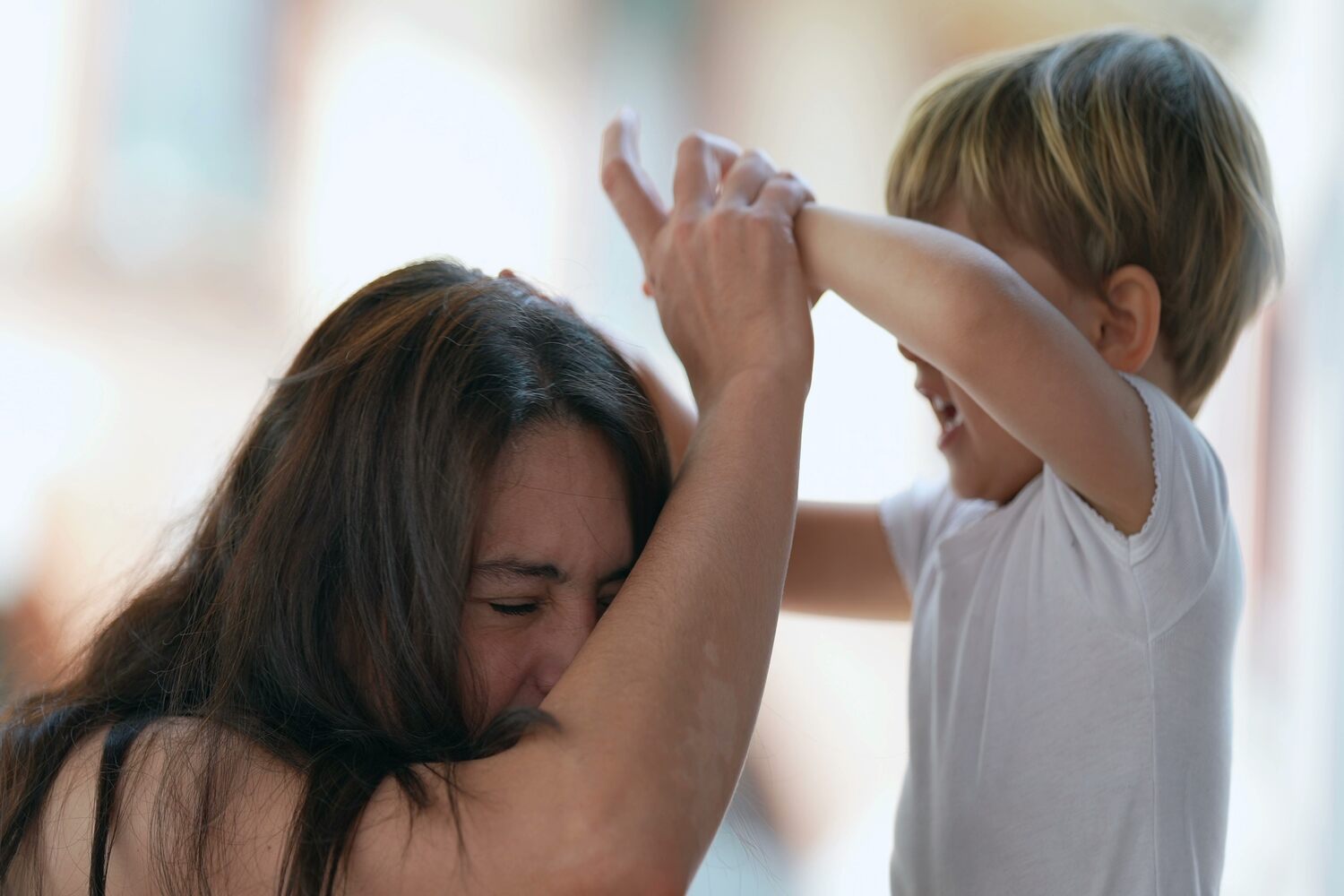
Just like hair pulling, hitting others is a learned behavior. In many households, parents use spanking as a handy tool for discipline. The toddler is smart enough to pick up cues that hitting can be used for showing anger, thereby giving them a sense of control.
Remedy
- Remove your toddler from the situation when they attempt to hit others
- When they hit themselves with a toy or an object, take it away from their hands and let them know the consequences of hitting
- Respond fast so that they know that the action is harmful and needs to be avoided
6. Banging Head
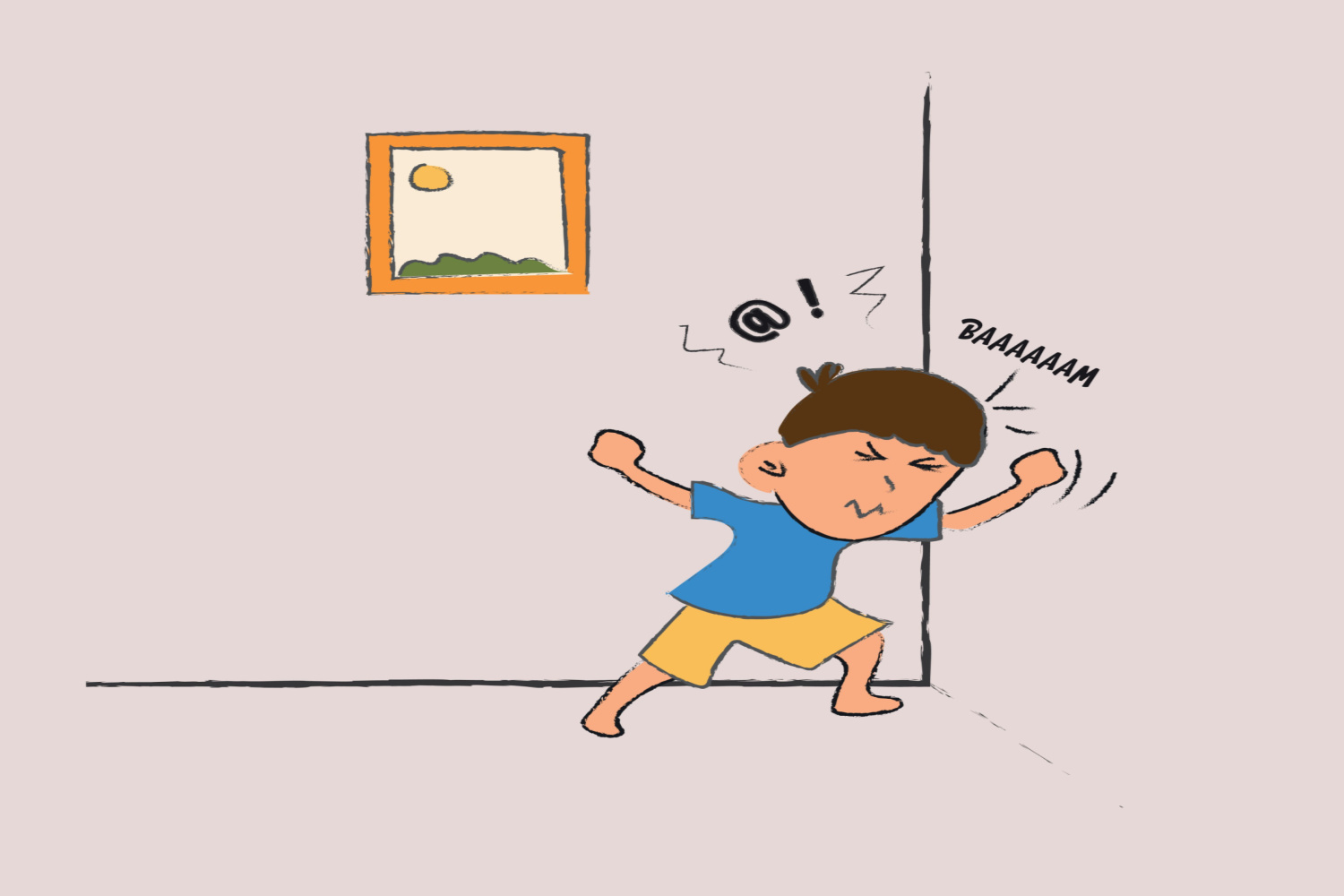
Occasional toddler head bumps aren’t concerning, but repetitive behavior calls for correction. Head banging is often used as a means of emotional expression and attention-seeking. It is dangerous and self-destructive. Research studies (4) have found that toddlers having a history of head-banging were emotionally unstable and restless.
Remedy
- Engage them in activities that they love and also involve yourself in the play
- Provide comfort and try to know their reasons for being upset
- Follow the same routine that gives a consistent message that head banging is a harmful activity
7. Shouting/Screaming
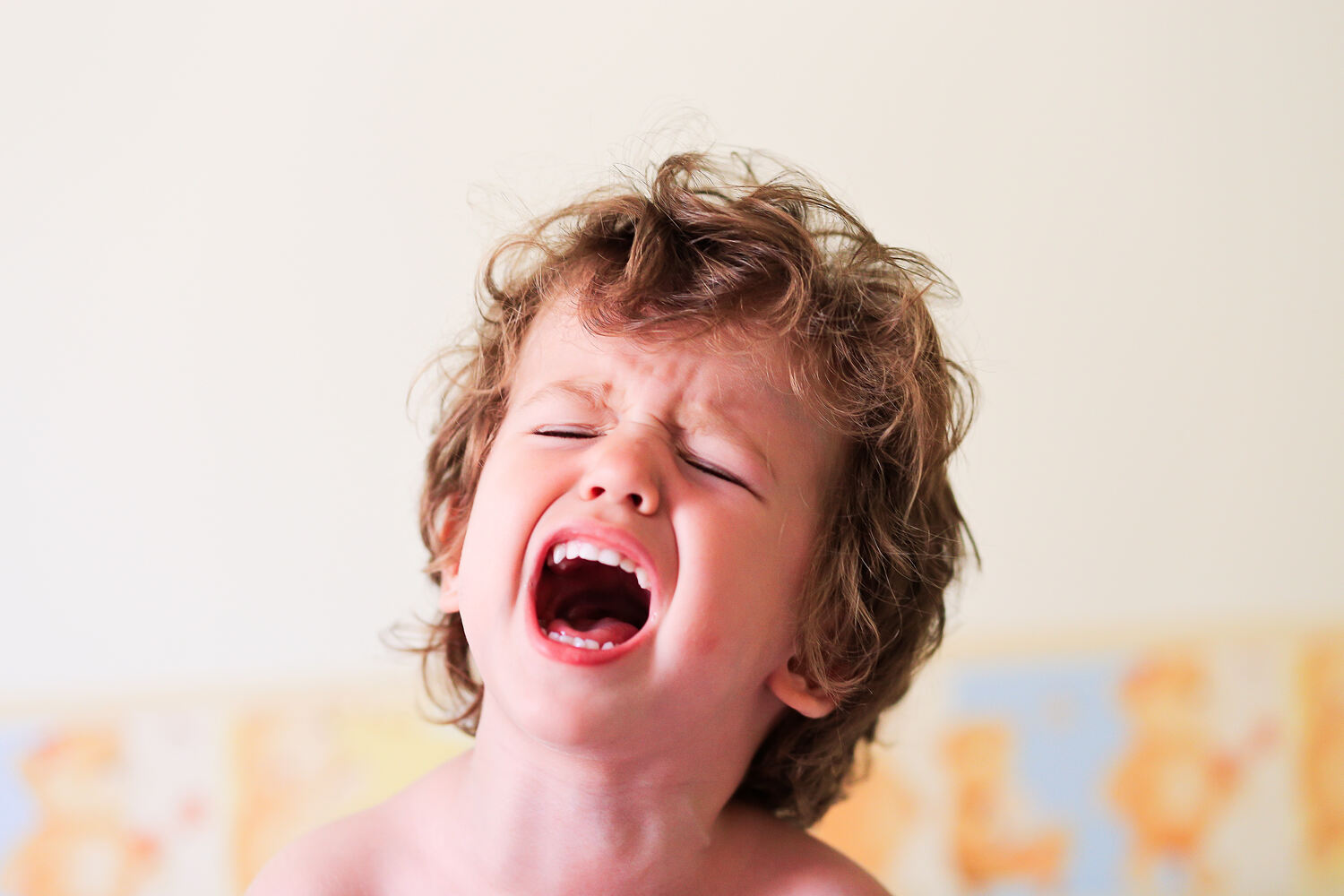
Since toddlers have a limited catch of words, they shout and scream to make themselves feel heard and noticed. Moreover, it is a means of expressing excitement, anger, and sadness. Study findings (2b) revealed that screaming is often used as an increased expression of anger.
Remedy
- Stay calm and avoid raising your voice in front of a toddler. You may encourage the behavior to continue
- Ask about their feelings and try to solve their issues
- Divert their attention to something else or try taking them out for some time in a play area where they can get busy
8. Throwing Tantrums
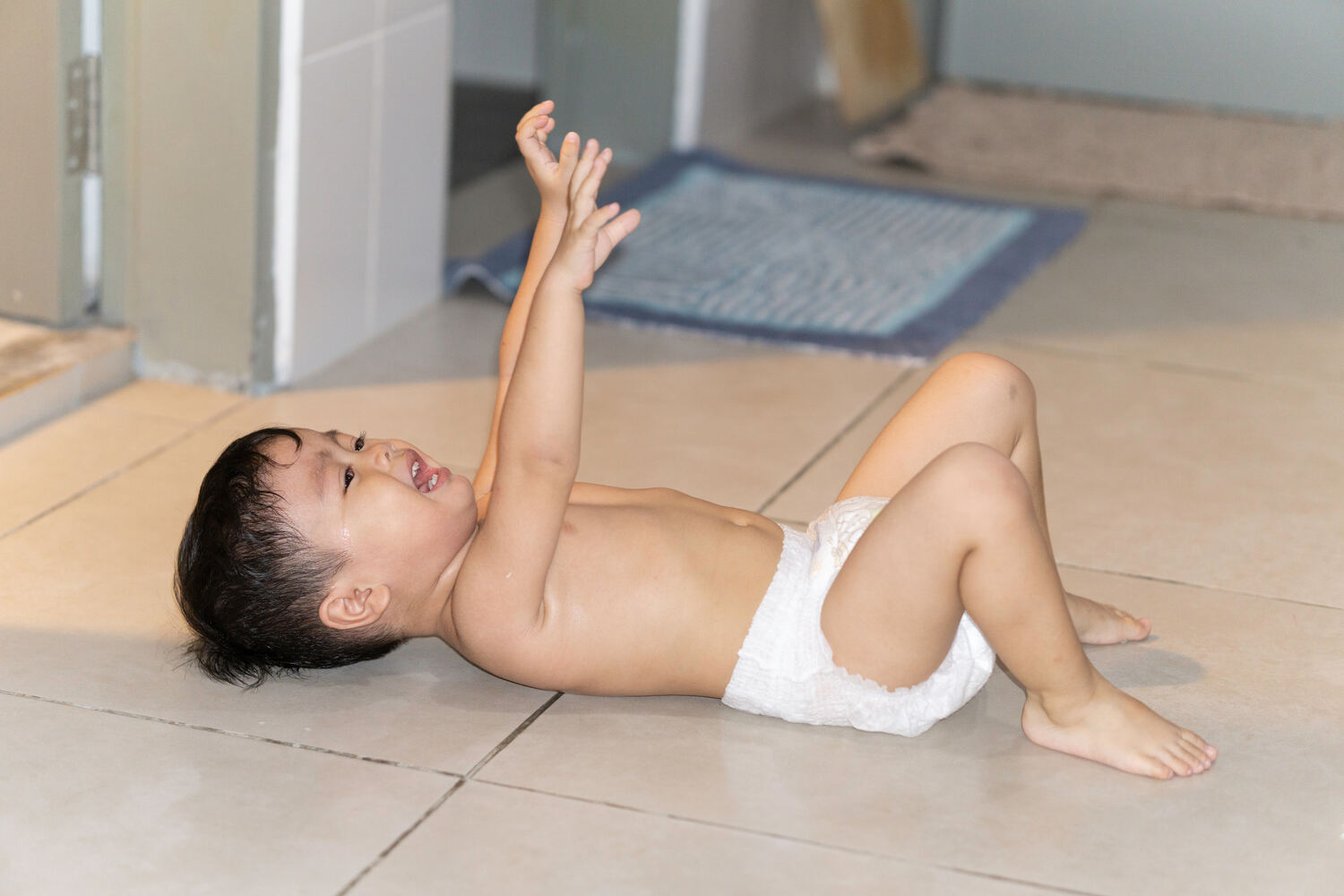
These are common when toddlers are sick, overtired, or irritated. They may scream, shout, or cry loudly. Studies (5) have shown that 91% of 30-36 months old toddlers show tantrums when irritated for some reason.
Remedy
- Attend to your toddler’s physical needs so that they are not too hungry or tired
- Appreciate their efforts when they cool down
- During tantrums, keep your calm and offer options such as a toy, or a snack that can help
9. Running Away From Parents

This can be dangerous in busy roads or unknown places such as big shopping areas. Toddlers love to show autonomy and this disturbing behavior is just this. They may resist holding hands and run away fast just to test your patience.
Remedy
- Allow them a safe space to run around such as children’s park
- Set boundaries and tell them about specific places where they cannot run freely and need to hold hands
- Encourage their good behaviors with hugs and praise
10. Crying/Whining

Toddlers cry or whine as a tool to seek adult assistance for not being able to cope up with situations on their own. Though annoying, this behavior is a way to communicate discomfort and frustration. Studies (2c) have revealed that crying also shows sadness and anger in toddlers.
Remedy
- Address underlying need for hunger, sleep, or tiredness to stop whining
- Offer comfort to the toddler by physical touches and love
- Teach them small words and phrases so that they can communicate their reason for crying
Top 10 Tips to Manage Toddler’s Behavior

Some of the handy tips to manage toddler’s behavior are –
- Teach your toddler the family rules about good and bad behavior
- Ignore minor misbehaviors and teach the expected, age-specific appropriate behaviors
- Never yell, insult, or spank your toddler for misbehavior
- Tell your toddler that they are doing a great job when they follow expected behavior norms
- Explain to them politely that hurting others is not good. It gives pain
- Use distractions when problem behaviors arise, as toddlers learn quickly by observing their surroundings
- Have control over your temper and avoid verbal threats and punishment completely
- Be consistent with your discipline. When you mention ‘no hair pulling’, make sure that you stop your toddler from pulling even a doll’s hair
- Listen to their concerns. Sometimes, it’s an illness or a discomfort that leads to misbehavior
- Focus on teaching the simple dos and don’ts; maybe tons of time till they learn their best
Few Pointers to Remember About Toddler’s Disturbing Behavior

Disturbing toddler behavior problems are annoying to handle but there are ways to handle situations better. Some steps you can take are-
- Remember that toddler behavioral responses are spontaneous and not deliberate or planned
- They have no intentions to hurt the adult caregiver but to make themselves feel noticed and heard
- The parent or caregiver should act as a good role model
- Understanding the causes of such disturbing toddler behavior problems is crucial for timely management
- Managing toddler’s disturbing behaviors includes modification of the environment, teaching them healthy ways of solving problems, and lastly loving them to the fullest
Handling disturbing toddler behavior problems needs patience and consistency. Caregivers can set rules at home, praise them when they do good and also pay attention to their needs and wants. By doing these, most toddlers can improve their behaviors easily.
FAQ’s
1. How do You Know if Your Toddler Has a Behavioral Disorder?
Understanding whether your toddler has a behavioral disorder involves looking for persistent misbehaviors such as throwing tantrums, screaming, whining constantly. At times, constant defiance can also hint towards a problem behavior requiring correction.
2. At What Age do Children Start Showing Signs of Behavior Problems?
Typically toddlers as young as 18 months to 3 years show behavioral problems because this is the time they prefer freedom and wish to get naughty. However, it is also true that minor behavior problems are common in early childhood years and can be ignored, if possible.
3. What is Abnormal Child Behavior?
Abnormal child behavior refers to problematic conduct that deviates from society’s norms and expectations. These behaviors can cause disruption in a toddler’s day to day functioning and harm the wellbeing of themselves and others.
4. Why is my 3-Year-Old Behaving so Badly?
Your 3-year-old may behave badly due to various reasons; such as seeking attention from you, or not being able to convey their feelings through words. It can also be due to hunger, lack of sleep, routine life changes, and even tiredness.
5. Is it Normal For a Toddler to Bite?
It is common for a toddler to bite as they try exploring various things around them. Sometimes, stomach issues, hunger, and anger can lead to biting tendencies. However, these tendencies are not acceptable socially; thereby needs correction.
References
- Temper Tantrums in Toddlers and Preschoolers: Longitudinal Associations with Adjustment Problems – [https://www.ncbi.nlm.nih.gov/pmc/articles/PMC9462137/]
- Screaming, Yelling, Whining and Crying: Categorical and intensity differences in Vocal Expressions of Anger and Sadness in Children’s Tantrums – [https://www.ncbi.nlm.nih.gov/pmc/articles/PMC3192404/]
- Impact of Cartoon Programs on Children’s Language and Behavior – [https://www.researchgate.net/publication/323523698_Impact_of_Cartoon_Programs_on_Children’s_Language_and_Behavior]
- Natural history and predictive significance of head-banging, head-rolling and breath-holding spells – [https://pubmed.ncbi.nlm.nih.gov/6510563/]
- Temper Tantrums – [https://www.ncbi.nlm.nih.gov/books/NBK544286/]

Chandrani Mukherjee,M.Sc (Clinical psychology),PGDEA
Responses (0)
Want curated content sharply tailored for your exact stage of parenting?
Related articles

Dysarthria in Toddlers – What is it, Diagnosis and Treatment Options

Importance of Omega 3 Fatty Acids For Toddlers

Dandruff in Toddlers – Causes and Top Home Remedies to Treat

Toddler Climbing Out of Crib – Why and Tips to Prevent

Top Healthy Indian Lunch Ideas For Toddlers(12 to 24 Months)

Almond Powder For Toddlers
Sponsored content
Discover great local businesses around you for your kids.
Get regular updates, great recommendations and other right stuff at the right time.





